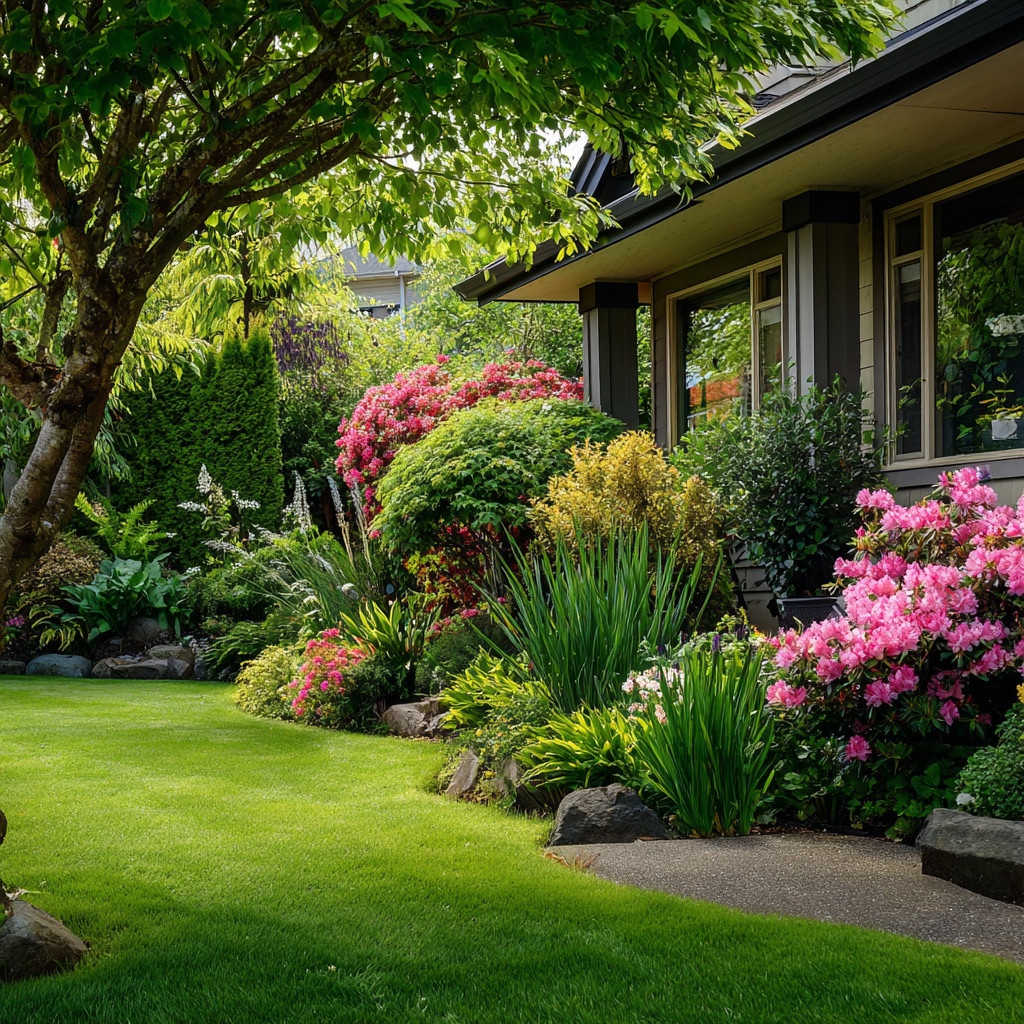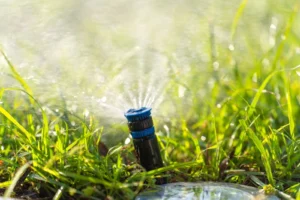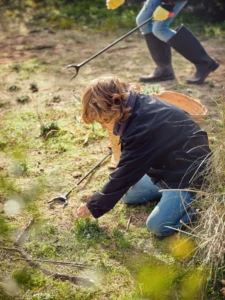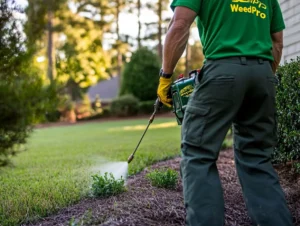To create a great landscape in Roswell, consider plants that thrive in USDA Zones 7B and 8A, as well as the unique soil conditions of Georgia clay. Doing so will ensure a vigorous, lush, and healthy outdoor space. Many homeowners and property managers opt for native, drought-tolerant, and low-maintenance plants to conserve water, reduce maintenance, and enhance the property’s seasonal beauty, ultimately increasing its value. This guide will cover the best native trees, shrubs, and perennials for your yard, providing options for water-wise, drought-resistant plants, as well as general low-maintenance planting strategies. We will also show you flowering shrubs and trees that offer seasonal color, and help you find the best shade and privacy trees for your property.
What Are the Best Native Plants For Your Roswell, GA Landscape?
To start with, native plants that naturally grow in the Roswell area, or are currently naturally growing in your area, which means they are already adapted to the local soil and climate. These plants thrive, offer habitat for local wildlife, and need less maintenance. By selecting indigenous trees, shrubs, and perennials, you will be selecting plants that have strong, established root systems and inherent disease resistance, as well as little to no need for fertilizer.
What Native Trees Offer Shade and Beauty in Roswell Yards?
Native trees provide cooling shade, support local wildlife, and add beautiful ornamental features:
| Tree (Scientific Name) | Mature Height | Standout Feature |
|---|---|---|
| Quercus alba (White Oak) | 80–100 ft | Wide canopy and supports local wildlife |
| Liriodendron tulipifera (Tulip Poplar) | 70–90 ft | Unique tulip-shaped spring flowers |
| Magnolia grandiflora (Southern Magnolia) | 60–80 ft | Fragrant summer blooms and glossy leaves |
These shade-providing trees reduce the need for watering and boost your home’s curb appeal, setting the perfect backdrop for colorful native perennials.
Which Native Perennials Add Vibrant Color to Roswell Gardens?
- Purple Coneflower has pinkish purple daisies that also tolerate dry conditions
- Black-Eyed Susan brings gold from summer to fall
- Coreopsis tinctoria will produce bright yellow flowers all warm months
- Baptisia australis has blue-violet spikes and fixes nitrogen in the soil
Grouped perennials provide texture and color with little additional water to maintain them.
What Are the Top Drought-Resistant Shrubs for Roswell Gardens?
These shrubs offer a great balance of needing little water and looking beautiful:
| Shrub (Scientific Name) | Water Needs | Benefit |
|---|---|---|
| Cephalanthus occidentalis (Buttonbush) | Moderate | Fragrant blooms that attract pollinators |
| Vitex agnus-castus (Chaste Tree) | Low | Aromatic leaves and lavender-blue spikes |
| Leucophyllum frutescens (Texas Sage) | Very Low | Silver foliage and seasonal purple flowers |
Adding these drought-resistant shrubs helps keep your landscape looking great even during hot summers, naturally leading to resilient perennial choices.
How Do Drought-Tolerant Perennials Improve Water-Wise Landscaping?
- They develop specialized root characteristics that absorb moisture and utilize it efficiently.
- Their leaves are often silvery or develop a waxy resilience, minimizing moisture loss.
- They will often go partially dormant during periods of drought, decreasing maintenance.
- They encourage pollinators and require minimal irrigation.
With these advantages, the garden can retain its color and plant vitality with as little water stress as possible.
What Benefits do Drought-Tolerant Trees offer in Roswell?
- The robust deep roots stabilize the favorably drained soils, allowing for continued moisture uptake in the deep soil.
- The canopy reduces heat stress, providing cooling shade and minimizing watering needs of under-planted plants.
- Long-term care is reduced because the landscape is more likely to thrive when summers in Roswell are hot and dry, reducing maintenance.
- Species such as Eastern Red Cedar can support wildlife and provide year-round green foliage.
- Drought-tolerant trees provide the backbone for sustainable landscapes in Roswell, GA, thereby reducing water consumption and care requirements.
How to Create a Maintenance-free Landscape with Plants in Roswell, GA?
Easy-care lawns are designed with resilient plants, a neat appearance, and professional installation to minimize future maintenance.
What Shrubs Require Little Care in Roswell?
- Nandina domestica is a low-maintenance plant that requires only a light trim once a year and grows well in clay soil.
- Itea virginica (Virginia Sweetspire) will grow in either shade or sun with minimal fertilizer.
- Escallonia rubra has evergreen foliage and beautifully shiny flowers, and does not require any soil amendments.
What are the Best Year-round Color Perennials that Are Easy Care?
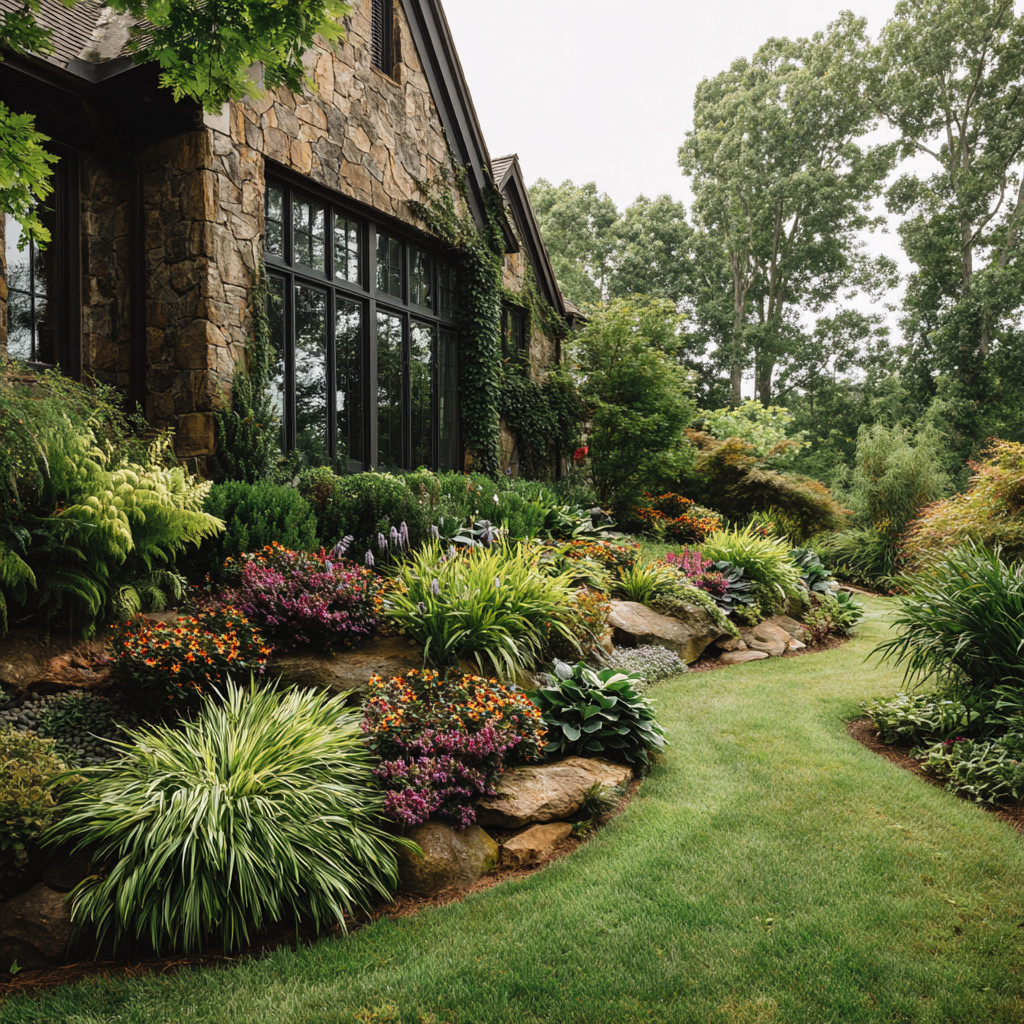
- Helleborus orientalis (Hellebore) blooms from winter to spring and prefers shade.
- Festuca glauca (Blue Fescue) forms clumps of silver foliage that require no trimming.
- Sedum’ Autumn Joy’ will change from green to pink shades all season
- Euphorbia amygdaloides (Wood Spurge) will hold its evergreen bracts through mild winters.
How do plant selections connect to time and effort savings in Roswell Yards?
When plants are selected for traits such as disease resistance, self-seeding potential, and being native, you may not need to use fertilizer, pruning, or pest treatments, which can provide you with many extra weekends to enjoy your yard instead of working on it.
What are the Best Flowering Shrubs for Roswell?
- Hydrangea quercifolia (Oakleaf Hydrangea) has cone-shaped blooms that bloom from summer to fall.
- Lagerstroemia indica (Crape Myrtle) flowers in pinks, reds, or whites in the summer.
- Rhododendron nudiflorum (Yellow Azalea) has very pretty clusters of yellow blooms in spring.
What are the Best Flowering Trees for Roswell Yards?
- Cercis canadensis (Eastern Redbud) flowers in the spring in magenta.
- Prunus serrulata (Japanese Cherry) has pale pink petals in spring.
- Cornus florida (Flowering Dogwood) flowers with white bracts and a nice full canopy.
How Do You Design a Landscape to have Color Year-round?
Layer your plantings, consisting of spring bulbs planted at the base, followed by mid-layer summer-flowering shrubs, and finally, a front edge of fall-color perennials. This will give you blooming foliage that will look great.
What Tree Species are the Best options for Roswell, USDA Hardiness Zones?
- Quercus rubra (Northern Red Oak) will develop deep tap roots and is a good option for Zone 7b/8a
- Gleditsia triacanthos (Honey Locust) tolerates heat and the cultural conditions needed for urban living.
- Celtis laevigata (Sugarberry) is an excellent choice for clay soil and is highly drought-resistant.
What Trees Provide Shade, Privacy, and Beauty?
- Live Oak provides widespread shade for a large lot
- Leyland Cyprus grows quickly into a dense screen for privacy
- Serviceberry provides blooms in spring, fruit in summer, and brilliant fall color.
How does Soil Type affect Tree Selection in a Roswell Landscape?
Heavy clay soil in Roswell retains moisture but lacks good drainage. Selecting trees that have adapted to wet clay soil and have developed fibrous roots will ensure the trees do not waterlog and can develop healthy root systems.
Design a Landscape That Thrives in Roswell
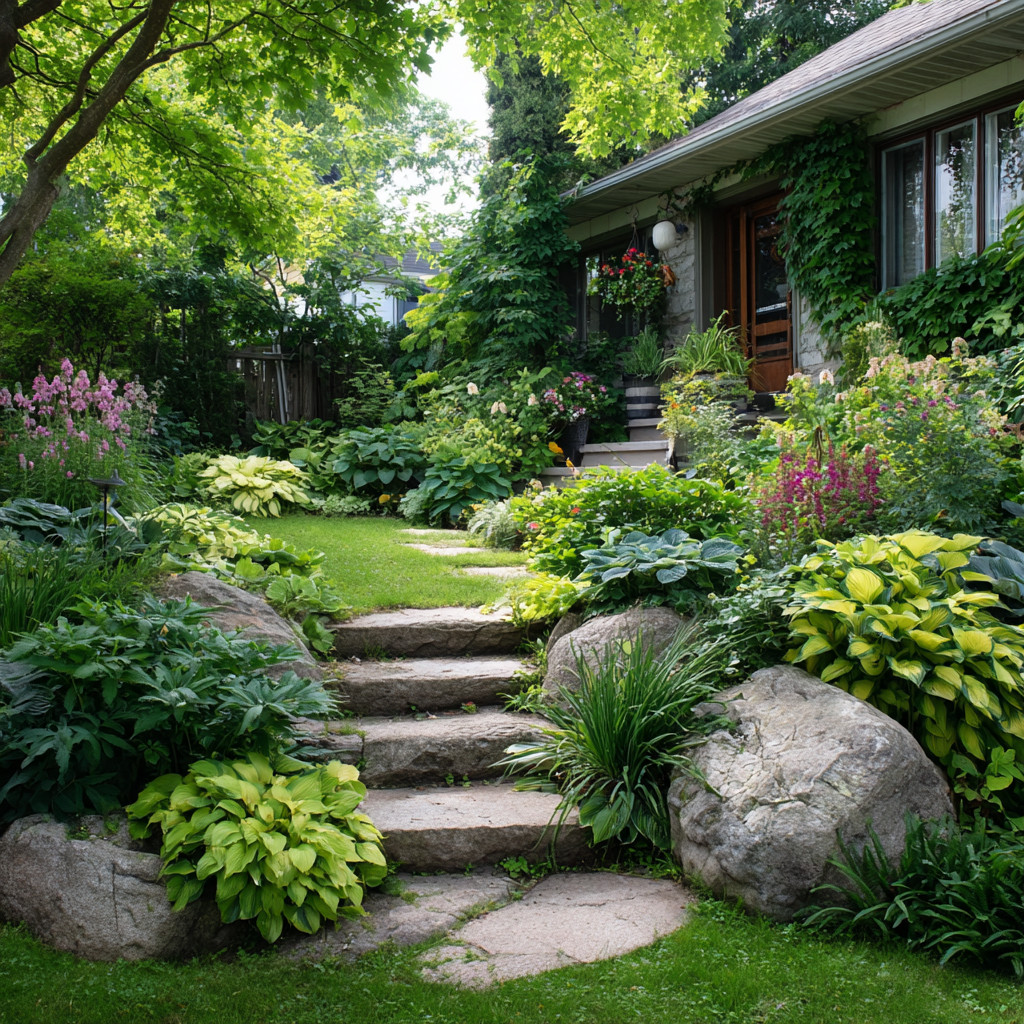
Choosing plants for your Roswell lawn doesn’t have to be complicated. Weed Pro makes it easy to select native, drought-tolerant, and low-maintenance species that thrive in Georgia’s conditions. Our team can help you design, install, and maintain a landscape that saves water, supports pollinators, and looks amazing all year long. Skip the trial-and-error and let our local experts create a sustainable, vibrant outdoor space tailored to your tastes.
👉 Contact us today to start your Roswell landscaping transformation.
❓ FAQ
Do drought-tolerant plants save money on watering?
Yes—these plants require significantly less irrigation, lowering your water bills over time.
Will native plants attract pollinators?
Absolutely. Native plants provide food and habitat for bees, butterflies, and other beneficial insects.
How often should drought-tolerant plants be fertilized?
Typically, once or twice a year, depending on the species. Over-fertilizing can harm their natural resilience.
🔗 Up Next: Expert Fire Ant Solutions for Every Property
Check out our next article: “Your Ultimate Guide to Beating Fire Ants in Atlanta: Expert Solutions for Homes and Businesses.“

